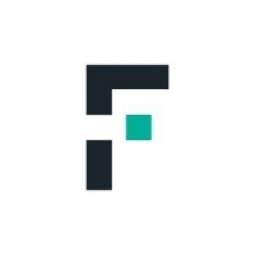Customer Company Size
Large Corporate
Region
- America
Country
- United States
Product
- Trusted Thin Client
- Trusted Gateway System
- VMware View
Tech Stack
- Virtual Desktop Infrastructure (VDI)
- PC over IP (PCoIP) protocol
Implementation Scale
- Enterprise-wide Deployment
Impact Metrics
- Cost Savings
- Productivity Improvements
- Digital Expertise
Technology Category
- Application Infrastructure & Middleware - Data Exchange & Integration
Applicable Industries
- National Security & Defense
Applicable Functions
- Discrete Manufacturing
- Quality Assurance
Use Cases
- Predictive Maintenance
- Remote Asset Management
Services
- System Integration
- Software Design & Engineering Services
About The Customer
The customer is a member of the Intelligence Community (IC) that supports the US Government and its Allies. They are involved in defense, intelligence, and civil agencies. The customer was looking for a solution that would reduce power, space, and cooling costs while strengthening collaboration, accelerating information sharing, and ensuring the most stringent information protection. They were also looking for a solution that would support both high-end tactical operations and low-end administrative users.
The Challenge
The Intelligence Community (IC) customer was facing several challenges including crowded desktops, facilities at capacity causing a strain on power, excessive cooling, limited floor space, network proliferation, decreasing annual budgets, and a need for cross domain collaboration. They embarked on an enterprise-wide initiative for a multilevel security solution to support both high-end tactical operations support and low-end administrative users. The complete solution called for a data guard with self-release and reliable (two-person) human review capabilities. The overarching goal was for a desktop solution that can become the enterprise standard for the IC, achieving a “Culture of Collaboration.”
The Solution
The customer selected the Forcepoint end-to-end solution to address their unique IT challenges. The solution consists of three components: Trusted Thin Client (front end), VMware View virtual desktop infrastructure (VDI) (back end), and Trusted Gateway System (data guard). These components provide high resolution video, two-way audio to a single host network, support for up to eight monitors from one thin client, PC over IP (PCoIP) protocol support for improved graphics quality, remote access, and secure multidirectional data transfer. With one wire to the desk, Trusted Thin Client users simultaneously and securely access multiple classified domains from a single thin client. Trusted Gateway System allows for the rapid movement of data between networks of different classification levels. Through the Trusted Gateway System Quick Release feature, text or files can be rapidly transferred to configured levels, increasing knowledge transfer among disparate networks in near real-time. Virtual desktops, through VMware View, provide the ability to quickly remove a compromised virtual computer and create a pristine copy the next time the user logs in. VMware View also provides PCoIP support for enhanced graphics quality. This VDI environment optimizes existing equipment to create secure, virtualized servers and desktops. This centralization makes patch distribution easier, lowers maintenance costs, reduces the amount of equipment to be managed, and reduces recapitalization costs.
Operational Impact
Quantitative Benefit

Case Study missing?
Start adding your own!
Register with your work email and create a new case study profile for your business.
Related Case Studies.

Case Study
Data Capture for Afghanistan Forces
Electronic equipments on the field of Afghanistan provided information on the status of the vehicle and to identify potential threats surrounding it to the British Force. The monitoring and interpretation of this data requires robust and sophisticated digitization for data capture and communication.

Case Study
Major Aerospace Company Automates Asset Management
The O&M division of an aerospace and global security company was using spreadsheets to manually track more than 3,000 assets assigned to students and staff. Maintaining audit trails for this high volume of equipment became increasingly time-consuming and challenging. The chore involved knowing precisely what equipment was on hand, what had been issued, its location and the name of the custodial owner of each item. Every aspect of this task was carried owner of each item. Every aspect of this task was carried out by individuals with spreadsheets. Manually documenting the full lifecycle of each asset added to the burden. This included tracking maintenance requirements and records, incidents and damages, repairs, calibrations, depreciation, and end-of-life data.

Case Study
Securing a Large Data Center in the EMEA Region: An IoT Case Study
A leading data-center operator in the EMEA region, with multiple facilities spanning over 25,000 square meters, faced significant security challenges. The operator experienced interruptions in their internal IT network due to unsupervised work of third-party technicians. Despite having a high-end building control system that provided 24x7 monitoring and control to all the building’s infrastructure, the data center was vulnerable from a cyber perspective as it was connected to the IT network infrastructure. The operator launched an urgent OT cyber security project that included both IT-OT network segmentation and OT network asset mapping and anomaly detection. The main objectives were to harden the security of the server systems, secure the facility’s power supply and server cooling system, strengthen the segmentation between building and operational systems, create a visual OT network map, and set up a system for presenting supply-chain attacks that may threaten the data center through equipment vendors’ maintenance activities.

Case Study
Enhancing Security Precision with IoT: A Case Study of Guardsman Group
Guardsman Group, a leading security company in the Caribbean, faced a significant challenge in maintaining the security of its digital infrastructure. The company provides security equipment, personnel, and systems for various businesses across the region. However, one of its offices experienced a security incident that affected all communications at that location. The existing security tools were not sufficient to provide the necessary protection, and it took hours to identify the source of the issue. This incident highlighted the need for a dynamic solution that could proactively identify threats. The company's primary concern was any disruption to its business, as it manages a significant portion of Jamaica's money and cannot afford for its operations to go down.

Case Study
LoRaWAN - Helping citizens and organizations to reduce environmental impact
More and more, our world is becoming aware about the environmental print that comes with population growth, limitation of resources, climate change and the need for sustainability. The biggest challange here was to raise awareness among citizens and organizations about their environmental impact, and to help themto reduce it in a sustainable way with the help of Real time data.

Case Study
Enhancing City Security through IoT: A Case Study of Atlanta
The city of Atlanta, with a resident population of over 420,000 and a metropolitan area of more than five million people, faced the challenge of ensuring the safety and security of its citizens and visitors. As a leading tourist destination and a multicultural city attracting global investment, Atlanta had to deal with the complexities of managing safety and security incidents. Over the years, the city had invested in various surveillance systems, providing visual intelligence to law enforcement and security professionals. However, these systems operated independently and were spread across a wide geography. The city aimed to increase collaboration among government agencies and create a shared Video Integration Center (VIC). The challenge was the disparate nature of the video systems, which were based on proprietary technologies and were both analog and IP based. The city also wanted to leverage the numerous private cameras located across the city, further complicating the integration of all these systems into one common platform.



